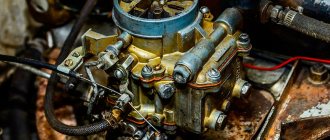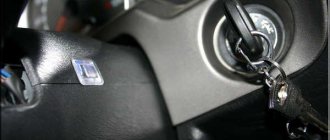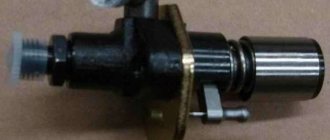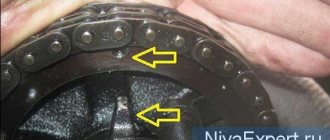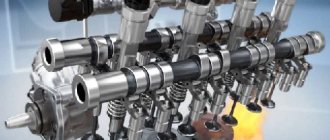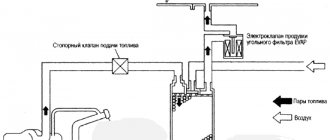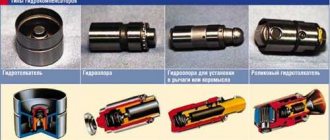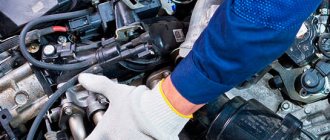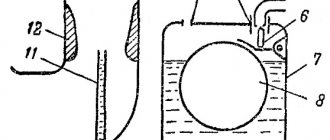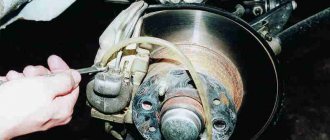Our motorcycle engine valve
1.We can offer engine valves for many models, such as NISSAN, CITROEN, TOYATO, VOLKSW, HONDA, BMW, FORD, DOGE, FERRARI, HYUNDAI, MERCEDES-BENZ, AUDI, PORSCHE, CADILLAC, CHRYSLER, CHRYSLER, etc .
9000 2. We can do laser printing on our product (according to your needs).
3.We can offer OEM service, sample service and design services.
4. We can guarantee our products for 2 years and 80,000 kilometers.
5. We can make Osvat packaging, normal packaging or according to customer's needs.
why choose HF
1. Since 1986, a leading company in the field of friction materials research, has obtained many patents in the field of friction.
2. "HF-BM" clutch plate, dominating 2/3 of the china market share. 80% offer to original motorcycle manufacturers.
2. More than 500 products and 2 factories located in Huangshan, Anhui and Chongqing.
3.ISO/TS16949 and GB14622: 2007 quality assurance.
Huangshan Benma Group Co., Ltd., located in Huizhou District Industrial Park, Huangshan, Anhui, is one of the largest professional automobile and motorcycle clutch friction materials factories in China. Our group mainly produces motorcycle clutch discs and brake pads , occupying 2/3 of the internal support shares for the main engines. Our products sell well not only in more than 20 cities in China, but also in Europe, America, Southeast Asia, etc.
Southeast Asia, Africa, Middle East, South America
Packing with blister packing or vacuum shrink packing optional.
Outer with hard carton for export.
2. Payment: 30% deposit or balance before shipment.
3. Delivery time: 10-20 days.
About our company:
For more information about motorcycle clutch kits, please send us an inquiry!
about valves. replacing graduation with a larger one.
In the Dnieper heads the valves are of different sizes, inlet 40 outlet 37. And the platforms in the casting itself are the same. So I’m thinking, what if the graduation is replaced with a larger one (40)? Is there any reason? And if so, which valve should I install (from what)?
there’s not much point, because the release happens under pressure, so that’s enough for you. The intake/exhaust valve sizes are related. if you increase it, then both.
for maugli
:
Well, not entirely necessary. In the Urals I changed the intake from 38 to 40 leaving the standard exhaust, there are also heads with full Dnieper valves, I didn’t notice much of a difference.
for BOA
: No need since there are no noticeable changes in work
But in reality you won’t be able to solder much difference from this. It’s enough to compare a 6-volt Ural, which has the same horsepower because of the valve, and a 28-volt Ural, whose intake gag is larger in diameter (that’s how big it is, I think it’s 32 horses), but you still can’t feel the difference, although There is a difference in horses.
esli klapana raznyje, to i dyry v golovah dolzny byt raznyje, inace eto neimejet smysla. -)))) mozet tam ktoto na staryje dneprovskije mt-9 golovy mt-10 klapana nahujaril.. a uvelicenije oboix dyr i klapanov(otdelno bolsyje klapana nedajut necego) dadut priros AG na vysokix abarotax, no nesilno.
Most likely it makes sense to install both valves with a larger diameter; they say from the Dnieper escort that the valves have a larger diameter than the standard. In any case, when they install Dnieper valves on Ural heads, the difference is noticeable.
for Izverg
:
When installing the Dnieper standard in the Urals, the engine reacts more quickly to gas, and the other parameters are tightened, as for the even larger diameter, there is almost no space left on the saddle, and there is also nowhere to bore for a larger saddle
for BOA
: However, I note that the exhaust valves on the Dnieper are already too big (in relation to the intake valves, of course) - they can even be slightly reduced (I’m thinking about putting some more affordable “Moskvich” one there). The operation you indicated should be carried out only if the valve seat is severely worn and there is a great reluctance to replace it (or the head assembly), but even in this case it is worth checking whether the enlarged valve is touching its colleague at the inlet (although this possibility is quite small), and Also take into account that the intake valve is less heat-resistant than the exhaust valve (the steel is different) and it will have a hard time at the exhaust.
Yes, it will simply fall apart, because... exhaust valves are made of heat-resistant steel, and during engine operation, they heat up to 800 degrees.
for Captain
: However, the inlet (40mm) on the Dnieper is larger than the outlet (37mm). As for the rest, I probably agree.
for meehei
: My friend bored saddles and nothing. These heads still work. Two seasons.
for BOA
: The fact is that, judging by the catalog data (“Repair of foreign car engines,” ed. “Behind the Wheel”), with an exhaust valve diameter of 37-38 mm, the intake valve reaches 44-45 mm in diameter (BMW engines with two valves per boiler), although up to such valve sizes grow very rarely. The result of installing a large valve at the exhaust while keeping it constant at the intake may be a slight reduction in low-end torque, with a max. The revs will not increase - the intake will not work.
for Captain
: I'm wondering how you're going to fit the SMALLER diameter valve? add metal to the saddle?
Baloo: “What do you think, Bagheera, can maugli
can I get that coconut over there?”
Bagheera (fighting back): “ Maugli
can get anyone!”
Just think about it - it’s probably going to be a long wait until
If it gets bigger, maybe I should change the saddle?
[Edited 18/2/2004 Capitana]
Baloo: “What do you think, Bagheera, can maugli
can I get that coconut over there?”
Bagheera:mad fighting back):" maugli
can get anyone!"
Just think about it - it’s probably going to be a long wait until
If it gets bigger, maybe I should change the saddle?
[Edited 18/2/2004 Capitana]
for Captain
: Don’t be offended, but still, who told you that
I have repeated and will repeat in books, this is good, but in life it’s the other way around. Experiments with the size of valve plates have shown that 35mm Ural exhaust, 40mm Dnepr inlet do not affect anything, at least the influence is not noticeable, compared to the Dnepro standard in the Urals.
Lorogo and for pure is not a necessary activity.
All this is of course good. I'm now waiting for the heads with huge valves to come to me. can not wait
for meehei
:
Is this on the same motor? But the piston, camshafts, ignition, carbs, etc. are also different. As for changing the saddle, that’s on the Dnieper, they’re bronze (which is good for military equipment designed for 20 minutes of combat, but not always good for civilians).
for Captain
:
What's serious? So, for reference, the IMZ-750cm has the dimension of “Dnepr”, there are even rods up to the dnieper.
Well, for that matter, Dnieper saddles live longer, with normal treatment.
for meehei
:
Of course, of course, we forget that Dniper has 650 cubic meters (please give more precise examples, otherwise you’ll be confused plus or minus a kilometer).
Tell me, gentlemen, bikers, why do they install camshafts with enlarged cams? Is it to increase the flow capacity of the valves due to the fact that they will open more, that is, the cylinders will be filled and cleaned better and all this seems to increase engine speed (this has been discussed more than once) .Now think about whether enlarging the valves has the same effect? Prada has a thing where a vacuum is created in the exhaust channel which helps the exhaust gases escape and which depends on the size of the exhaust valve and therefore there must be some ratio between the intake and exhaust valves. (I’m talking about this I read somewhere). And the valves on the Dnepr can be installed, it seems from the GAZ-21, while boring out the sockets in the heads for the required saddles. But in general, it’s better to take the head with the valves to a car shop and try everything on there. In practice, I haven’t used it due to the lack I’ll raise some money and then things will go well.
Shaft together with pushers inside the block
In this position of the valve structure, that is, when it is located inside the cylinder system, the pushing device can act on the part directly touching the valve, which opens it. This is considered a more advantageous position than the previous one, which was discussed above. After all, using a lot of moving particles, the speed of the car is reduced by an order of magnitude. As a result, the intake valve and exhaust valve have less pressure, which reduces the power of the internal combustion engine by an order of magnitude.
Rod and rocker
The first element is a metal tube with a diameter of 12 millimeters.
It serves to transmit the forces that come from the pusher to the rocker arm. The pipe has pressed-in spherical tips. The lower element rests against the pusher heel, the upper element rests against the adjusting screw. The tips also have holes for lubrication. They pass through the pipe cavities to the valve bearings. The rocker arm is designed to transfer forces from the rod to the valve. The element is made of steel. Above the bar, the rocker arm has a short arm. It is longer above the valve. The short one has a lock nut for setting the thermal gap (applies only to mechanical elements). The rod is located on an individual axis. Two bronze bushings are pressed into it.
Camshafts for an atmospheric engine
Dima800
User
You've clearly gone overboard somewhere. At 71*136*82.5, I had 10.5 sticks (though not stolnikov, but phase 300+) that went from 5500 to 9000. and this is with 3+ overlaps. with the same gearbox as yours, in an unsawed body with an interior, there was a quarter 14.012c
Maybe you installed the ceilings crookedly. I tried to do more than 4. at the bottom it decreases greatly, but at the top there is no change.
ilkari
Moderator
let's talk about setting up the ceilings. If I'm wrong about something, please tell me.
1. influence on XX. the higher the overlap. the worse the performance at idle, as well as at low throttle at low speeds.
physics: there is atmospheric pressure above the exhaust valve. There is a vacuum above the intake valve due to the closed throttle. at the moment the valves close, this pressure difference causes exhaust gases from the exhaust pipe to flow back into the cylinder, and even into the intake duct. therefore, the engine always runs not on fresh mixture, but with a large percentage of exhaust gases. That's why it works like crap.
more overlap - more ass. can only be corrected with throttles. due to the small volume of vacuum from the intake valve to the throttle, there is no such pressure difference at the moment of shutdown and the combustion does not press so hard into the cylinder. The closer the damper is to the valve, the more stable it is. the absence of a vacuum ramp also improves performance. there are no leaks from channel to channel. since there are very different phases where which cylinder has a vacuum peak, and where there is almost no vacuum.
2. engine operating speed. medium and high.
why overlap is good - if the exhaust system is made correctly, then at resonance speed in the overlap phase the pressure in the exhaust channel near the valve drops sharply. reduced exhaust pressure and atmospheric pressure at the inlet (full throttle), or even increased pressure if the intake is also in resonance, creates a positive pressure difference. which leads to a complete replacement of exhaust gases in the combustion chamber
for a fresh and clean mixture. This process does not affect the filling of the cylinder itself! overlap works when the piston is at TDC and the cylinder there is completely closed by the piston! We are only talking about purging the volume of the combustion chamber.
if the overlap is small, the cross-section of the valve gap is not enough for this effect. that is, there should be sufficient overlap.
Thanks to this effect, the filling can reach the current filling + combustion chamber volume. but this is not the limit. resonance of the intake with the high pressure peak at the end of the intake phase allows you to add more air into the cylinder than the cylinder volume. that is, even the current filling can be more than 100%. even if the overlap is zero. this is achieved by proper intake length and retarded intake valve closing.
both effects together give 120%, and in top atmospheres even higher.
in a real setting, both factors must be taken into account simultaneously. and overlap, and advanced phases of exhaust opening, and delayed intake closing phases.
on the same camshafts you can make either a large overlap OR large phases by winding the gears back and forth.
the general rule is that the wider the phases (mentioned above, and not the general phase of the cam), the higher the resonance speed will be. with the same inlet and outlet.
that is, on small overlaps the motor always runs smoother from top to bottom. without twitching and without obvious pick-ups. the filling is uniformly low. but up to cosmic revolutions. it seems to be spinning. but it doesn't crash.
if you screw on the ceilings. then we immediately reduce the phase. this leads to loss of filling at space speeds. like 9-10 thousand. the lows up to 2-3 thousand are also lost, especially with a receiver. but in the “middle” of 4-8 thousand the filling is growing.
The higher you make the overlap, the more obvious the loss of the tops, and the pickup in the middle.
this is if the phase is about 300 degrees. on small overlaps like 2mm it will go up to 9000. with overlaps like 4mm it will go up to 7-8. if the intake and exhaust are wise, the power will be higher and the thrust will be much higher. if you still raise the ceilings to 5mm, the middle is there, the top will obviously lose. maybe even with a reduction in power.
if the phase is 320 and higher, there will be shit everywhere on the 2mm overlap. not because the overlap does not work, but because the delay phase of the intake valve closing there will be more than 90 degrees. half the piston stroke up on the compression stroke is idle. You need to close the intake valve not the later the better, but strictly on time. in the wide phase, for this you need to install a large overlap. The phase itself is designed for just that. overlap 4 and higher - it will start working at 5+ rpm up to space like 9 thousand, but if the intake and exhaust correspond to these rpm. and not what was written above.
Further. according to different inlet-outlet overlap. if the overall phase is different, then the overlap is less where the phase is less. this is the default.
but even if the lift and phase are the same for intake and exhaust. reduce the exhaust and increase the intake - shift the thrust to low speeds; increase the exhaust and decrease the intake - shift the thrust to high speeds. It’s like turning a gear forward and backward on an 8-valve engine.
Causes of burnout
Valves burn out for various reasons, including:
- factory defects or low-quality spare parts;
- incorrect valve adjustment or malfunction of hydraulic compensators;
- valve wear (valve stem or guide bushing);
- early or late ignition;
- lean mixture.
No one is immune from purchasing defective and low-quality spare parts, so buy spare parts from trusted sellers who value their reputation. If the valves are adjusted incorrectly (they are tightly clamped), the engine operation will be noticeable by the characteristic “tractor” sound. In this case, due to non-compliance with the thermal clearance, the valve overheats, which will invariably lead to its burnout.
If the ignition is set incorrectly, combustion of the combustible mixture occurs when the valve is open and leads to its malfunction. A lean mixture is dangerous because the combustion temperature of the combustible mixture increases, which leads to overheating and burnout.
Since this DTC indicates a problem with the circuit, you will use
- Connector and Harness Inspection - Make sure the VVT solenoid valve connector is in good working order with no bent or loose pins, corrosion, or water ingress. Make sure the connector is securely installed. Check the wiring harness for damage, fraying, exposed or broken wires. Repair as needed.
- Voltage Check - With the engine running, you should have a minimum of 13.4 volts at the battery. Check the VVT solenoid valve check probe, usually located in the cylinder head or valve cover, and check the battery voltage.
- If the voltage is incorrect, suspect an open circuit between the ECM and the valve. Disconnect the connector and recheck the battery voltage. If not, suspect an open circuit between the ECM and the valve. Inspect the wiring harness and repair if necessary.
- If the voltage is correct, suspect a grounding problem. With the key turned off and the engine off, disconnect the VVT solenoid valve connector and the ECM connector. From the VVT solenoid valve connector, check both pins for short to each other and short to ground. You should measure the infinite resistance to ground and across the pins. If incorrect, suspect a short circuit. Repair as needed.
- VVT Solenoid Valve Check
- Check the resistance between the solenoid valve contacts. You should measure between 5 Ω and 15 Ω, depending on the manufacturer and temperature. Check your manual for the correct specification. If incorrect, replace the valve.
- Check resistance between contacts and ground. You must measure the infinite resistance to ground. If incorrect, replace the valve.
Features of work
Valves are constantly exposed to high temperatures and pressures. This requires special attention to the design and materials of these parts. This is especially true for the exhaust group, since hot gases escape through them. The exhaust valve plate in gasoline engines can heat up to 800˚С - 900˚С, and in diesel engines 500˚С - 700˚С. The load on the intake plate is several times lower, but it also reaches 300˚C, which is also quite a lot.
That is why heat-resistant metal alloys containing alloying additives are used in their production. Also, exhaust valves often have a hollow stem filled with sodium. This is done for better thermoregulation and cooling of the plate. The sodium inside the rod melts, flows and takes some of the heat from the plate and transfers it to the rod. This way you can avoid overheating of the part.
Engine valve mechanism
Carbon deposits may form on the seat during operation. To avoid this, designs are used that rotate the valve. The seat is a ring made of high-strength steel alloys that is pressed directly onto the cylinder head for tighter contact.
Also, for proper operation of the mechanism, the regulated thermal gap must be observed. High temperatures cause parts to expand, which can cause the valve to malfunction. The gap is set between the camshaft cams and the pushers by selecting special metal washers of a certain thickness or the pushers themselves (cups). If the engine uses hydraulic compensators, the gap is adjusted automatically.
Too large a thermal gap will prevent the valve from fully opening, and therefore the cylinders will be less efficiently filled with fresh charge. A small gap (or lack thereof) will not allow the valves to close completely, which will lead to their burnout and reduced compression in the engine.
ICE with one shaft
There are ICE models that allow the cams to act directly on the levers; they are usually small and are also called fingers. In such an internal combustion engine, the valve material is carefully thought out. There are not many components that play a role in opening and closing the dampers. So, in particular, the movement of the car depends entirely on the cams, which directly act on the short parts that open or close the valves.
As you can see, such a system has few technical difficulties, and besides, such a design is light in weight. There are absolutely no rods in it, which act as a pusher and a rocker arm, which is provoked by the pushing device, exerting pressure on it.
The material of the chain, which contributes to the correct positioning of the shaft on the sprocket, affects the fact that it often hangs.
The core solution to this problem will be the need to add several small sprockets, as well as tension on the short chain. They also use straps that are non-stretchable; their material is rubber. Inside each oil belt there are sprockets that help rotate the camshaft and crankshaft.


